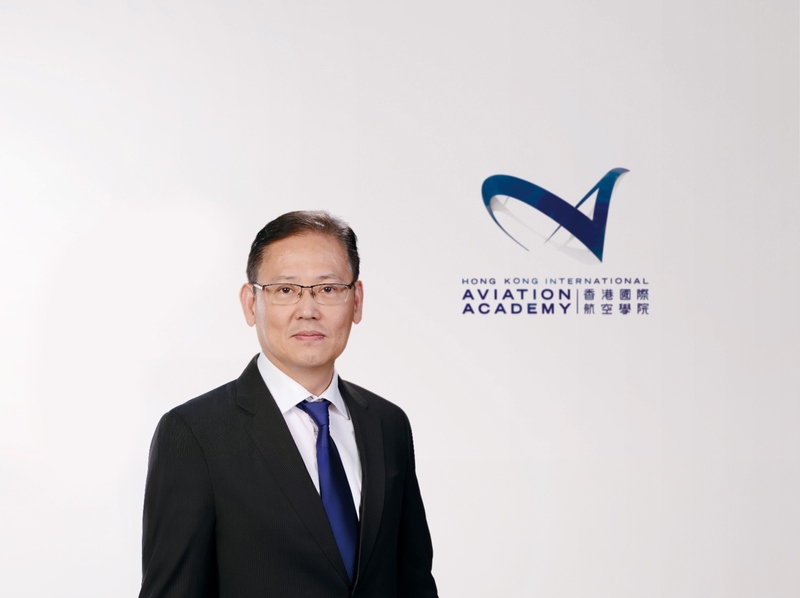3 Strategies to Rebuilding the Aviation Workforce
HKIAA President Simon Li discusses strategies to bridge the gap between supply and demand in the aviation workforce.
This article was first published on ACI World Insights
3 Strategies to Rebuilding the Aviation Workforce
HKIAA President Simon Li discusses strategies to bridge the gap between supply and demand in the aviation workforce.
The aviation industry relies heavily on a skilled and diverse workforce. Today, there is a significant gap between the supply and demand. Industry stakeholders including airports, civil aviation authorities, and other airport business operators cannot afford to stay in siloes, pursuing their own interests. They need to intentionally engage with each other in their communities to ensure a steady pipeline of skilled workers to sustainably maintain the global air transportation system.
The pandemic saw the industry lose its workforce at epic proportions, practically halved, with layoffs, furloughs, or early retirement. Those who lost jobs included pilots, flight attendants, ground staff, and more. Many have also lost confidence, not wanting to return to an industry which might not offer security. Others may have altogether changed careers and thus, not inclined to return to aviation. While there are processes or technological approaches which can ease some of the operational pain points to facilitate recovery, the industry cannot afford to be complacent.
Under more normal pre-pandemic circumstances, the Air Transport Action Group (ATAG) noted the aviation industry provided 87.7 million jobs. These included jobs with airport operators, airlines, air navigation service providers, etc.
Today, the aviation industry is scrambling to meet the high demand for a skilled workforce. Despite the proportionate recovery and increase in global passenger traffic, rebuilding the workforce and ensuring a pipeline of skilled workers has not been at the same pace.
Boeing in 2023 forecasted the industry needing over 649,000 new pilots, 938,000 new cabin crew, and 690,000 new maintenance technicians to sustain the traffic growth in the coming 20 years. These 2.3 million jobs do not yet account for those working in air navigation services, airport operations, and other functions within the collective aviation ecosystem. Embracing one of HKIAA’s missions to nurture young talent and provide career advancement for the continuous development of Hong Kong’s aviation industry, three all-encompassing strategies are adopted at HKIAA. They include raising awareness, offering internships with job placements, and providing academic accreditation/ qualification opportunities for those interested and willing to advance their careers in the aviation industry.
Raising Awareness for Careers in the Aviation Industry
A variety of activities can be adopted to help raise awareness of career opportunities in the aviation industry. One major target audience is primary and secondary school-aged students within an airport’s vicinity and its surrounding communities.
Nothing piques interest more effectively than school talks and onsite airport visits for students. To illustrate, HKIAA, in collaboration with local schools, has given a multitude of school visits or conducted field trips for students to Hong Kong International Airport (HKIA). Students are given a taste of airport operations, with visits to behind-the-scenes settings normally restricted to the travelling public. School talks and airport visits not only raise students’ awareness of career opportunities, but these activities also complement their learning process at school.
Apart from the academic school year, there is also opportunity to continue raising awareness to students during holidays. One of the HKIAA’s highly popular programmes is its Aviation Camps. Depending on the area of interest, primary and secondary students could spend 2 or 3 days getting more in-depth exposure to a specific operation or function, visit the air traffic control tower, and hear from actual aircraft engineers, pilots, or air traffic control officers share career insights. Some students are even able to get hands-on experience on the HKIAA’s air traffic control or flight simulators.
More recently, HKIAA extended its awareness raising activities to Mainland China in partnership with aviation education institutions there. This enabled reciprocal learning opportunities and airport visits for students between Hong Kong and Tianjin. The vibrancy of each city’s aviation industries was highlighted, further affirming the benefits such exchange programmes can bring about, not just for the aviation industry but also their respective economies.
Airport Internships with Job Placements
Another effective strategy for engaging new people into the workforce is to provide hands-on experience via internships and job placements at partner airport companies. The HKIAA has introduced this means for ease of entry into the industry as part of its diploma programme in aviation operations for secondary school graduates or other young adults.
The “Diploma in Aviation Operations” integrates one month of structured classroom learning and 12 months of job placement. Students have the opportunity to obtain a recognised academic qualification, professional skillsets, practical experience, and a chance to earn income. Job placements have covered the breadth of airport operations in aircraft engineering, ramp / flight operations, airlines catering, aviation development, customer / ground handling services, air cargo or aviation security.
Similar job placement opportunities were also extended and offered by HKIAA to students in the Greater Bay Area (GBA) in Mainland China. With a population of over 86 million, the area is a rich resource for recruiting and upskilling new talent which the industry needs. Many of these GBA students receive full-time job offers in their new-found careers in aviation after completing the internship in Hong Kong, under the provision of the Hong Kong Government’s Labour Importation Scheme. This approach has proven to be a win-win-win approach, i.e., providing the industry with a supply of trained workforce, supporting Hong Kong to maintain its status as an international aviation hub while offering these young talents exciting career opportunities in aviation.
Accreditation and Qualification Opportunities for Career Advancement
Equally important to attracting new talent to the workforce is retention. The third strategy contributing to the pipeline of competent workforce in aviation includes providing accreditation/ qualification opportunities. Similar to how companies provide career paths for their talents, academic study paths are also made available for those who have the desire and capacity to study to attain additional accreditation or qualifications.
To illustrate, those who have attained diplomas can opt to continue working while studying part time, to progressively pursue professional diploma qualifications, a bachelor’s degree and even an Advanced Master of Air Transport Management, provided in collaboration with other tertiary education institutions and Ecole Nationale de l’Aviation Civile (ENAC), respectively.
The HKIAA is also a regulator-approved training organisation with a breadth of internationally recognised and accredited courses and programmes for working professionals needing to attain or renew various licences or certifications. These include pertinent air traffic controller training, Aviation English language proficiency and a 2023-launched cadet pilot programme.
Human resource development is an issue which the industry will continually grapple with, post-pandemic notwithstanding. The industry can only stand to benefit from the aforementioned capacity building strategies as a start. While the lack of harmonised competencies in some aviation disciplines may compound the shortage of skilled aviation professionals, the recipe here is to continually engage the industry and tailor long term initiatives targeted at making a difference for the industry. Bridging the gap between supply and demand requires concerted efforts from all stakeholders to ensure developed plans support business growth and meet the industry’s specialised human resource needs.















